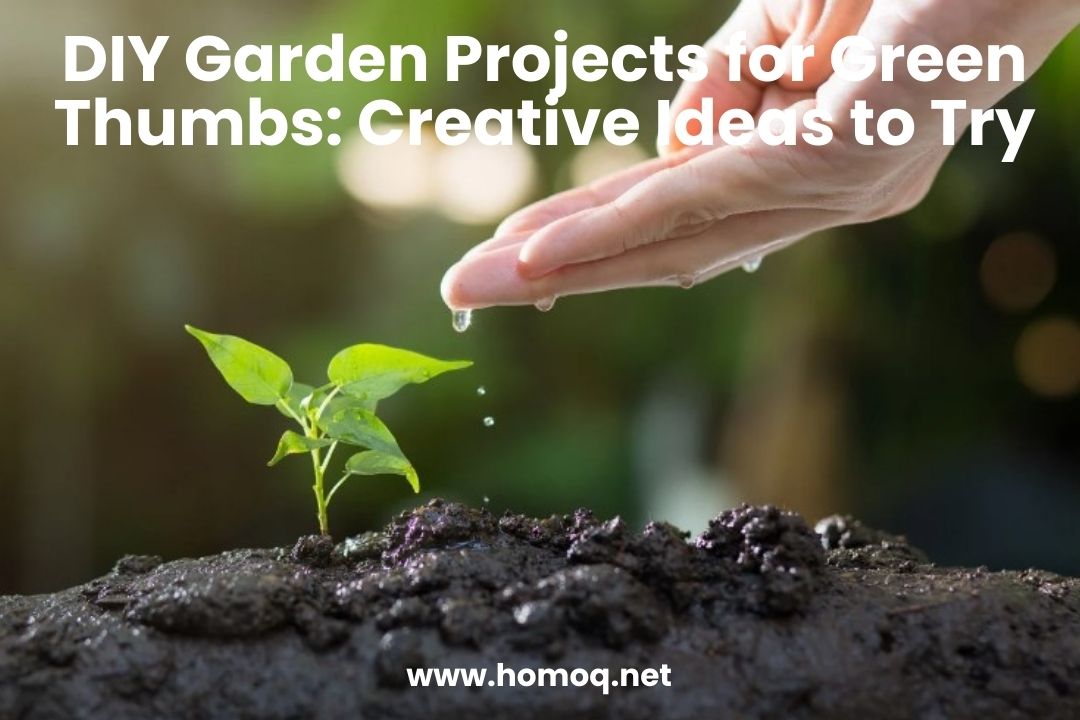Gardening is a rewarding activity that combines creativity, sustainability, and a love for nature. Whether a seasoned horticulturist or a beginner, DIY garden projects can elevate your gardening experience while adding beauty and functionality to your outdoor space. Here are some inspiring ideas, tips, and step-by-step guides to kickstart your green thumb journey.
Benefits of DIY Garden Projects
Engaging in DIY garden projects offers more than just aesthetic appeal. Some key benefits include:
- Cost-Effectiveness: Reuse and repurpose materials to save money.
- Creativity Boost: Design your garden according to your style.
- Sustainability: Reduce waste by upcycling old items.
- Personal Satisfaction: Enjoy the fruits (and flowers) of your labour.
1. Create a Vertical Herb Garden
Vertical herb gardens are perfect for small spaces and add charm to any balcony or backyard.
Materials Needed:
- Wooden pallets or a trellis
- Small pots or containers
- Potting soil
- Herb seedlings
Steps:
- Clean and paint the wooden pallet if desired.
- Attach small pots to the pallet using hooks or sturdy wire.
- Fill the pots with potting soil and plant your herbs.
- Place the vertical garden in a sunny spot and water regularly.
2. DIY Compost Bin for Organic Fertiliser
A compost bin is essential for eco-friendly gardening, turning kitchen scraps into nutrient-rich soil.
Materials Needed:
- A plastic storage bin with a lid
- Drill
- Organic waste (vegetable peels, coffee grounds, etc.)
Steps:
- Drill holes around the bin for aeration.
- Layer organic waste with dry leaves or shredded newspaper.
- Turn the mixture weekly to speed up decomposition.
- Use the compost in your garden after 4-6 weeks.
3. Build Raised Garden Beds
Raised garden beds improve soil drainage and make gardening accessible for all ages.
Materials Needed:
- Wooden planks or cinder blocks
- Nails or screws
- Drill
- Soil and plants
Steps:
- Assemble the wooden planks into a rectangular frame.
- Place the frame in your desired garden area.
- Fill the bed with nutrient-rich soil.
- Plant vegetables, flowers, or herbs.
4. Decorative Garden Stepping Stones
Personalise your garden path with custom stepping stones.
Materials Needed:
- Quick-set concrete
- Moulds (old pans or plastic trays)
- Decorative items (pebbles, shells, or glass beads)
Steps:
- Mix the concrete according to the package instructions.
- Pour the mixture into the moulds.
- Press decorative items onto the surface.
- Allow the stones to dry for 24-48 hours before placing them in your garden.
5. Upcycled Planters from Household Items
Repurpose old household items to create unique planters.
Ideas:
- Turn old boots or shoes into quirky planters.
- Use tin cans as rustic pots.
- Convert broken teapots or cups into charming flower holders.
6. DIY Bird Feeder to Attract Wildlife
Invite birds into your garden with a homemade bird feeder.
Materials Needed:
- An empty plastic bottle
- Wooden dowels
- String
- Birdseed
Steps:
- Cut small holes in the bottle for the dowels (perches).
- Fill the bottle with birdseed.
- Hang the feeder from a tree branch using the string.
7. Pallet Furniture for Outdoor Spaces
Transform wooden pallets into garden furniture like benches or tables.
Materials Needed:
- Wooden pallets
- Sandpaper
- Paint or wood stain
- Nails and a hammer
Steps:
- Sand the pallets to smooth rough edges.
- Assemble the pallets into your desired furniture shape.
- Paint or stain the wood for a polished finish.
Essential Tips for Successful DIY Garden Projects
- Start small and build your skills gradually.
- Use high-quality materials to ensure durability.
- Research the specific needs of plants in your region.
- Incorporate water-saving techniques like drip irrigation.
FAQs
Q1: What tools are essential for DIY garden projects?
A: Basic tools include a trowel, pruning shears, a drill, gloves, and a watering can.
Q2: How can I make my garden more sustainable?
A: Use recycled materials, create a compost bin, and grow native plants that require less water and maintenance.
Q3: Can I do DIY garden projects indoors?
A: Yes! Consider projects like vertical herb gardens, terrariums, or mini succulent arrangements for indoor spaces.
Q4: How do I prevent pests in my garden?
A: Use natural remedies like neem oil, introduce beneficial insects, and keep your garden clean and weed-free.
Q5: Are DIY garden projects suitable for kids?
A: Absolutely! Simple projects like painting pots, planting seeds, or building bird feeders can engage and educate children.
By embracing these DIY garden projects, you can create a personalised and sustainable outdoor space that reflects your style and nurtures your love for nature. Happy gardening!

